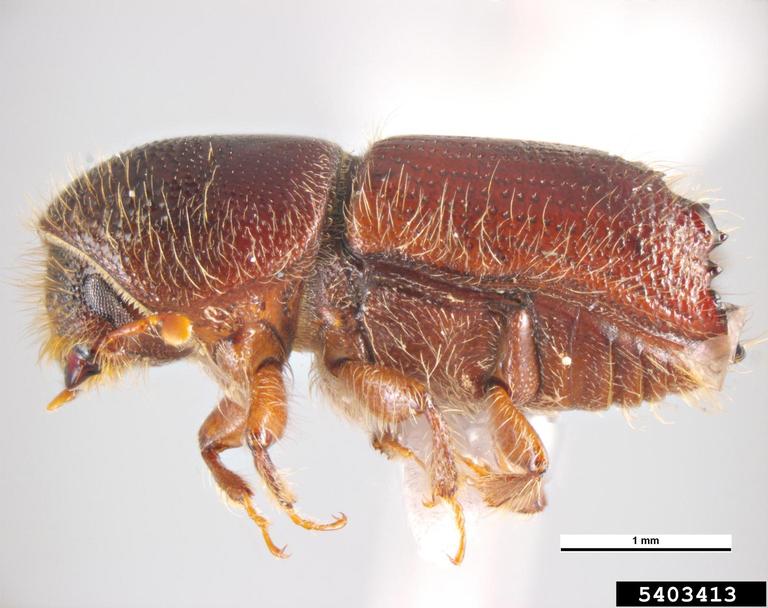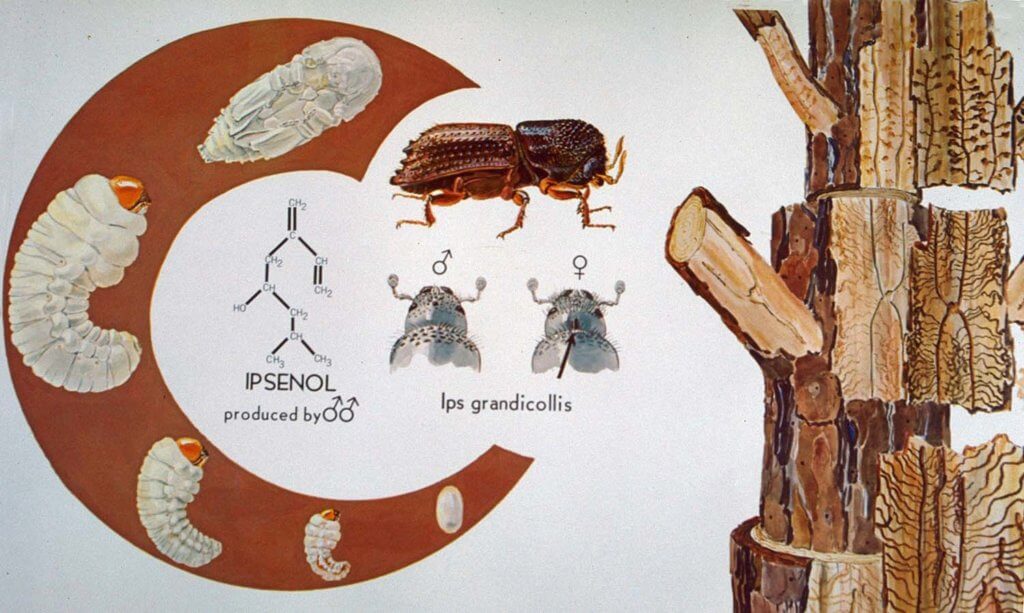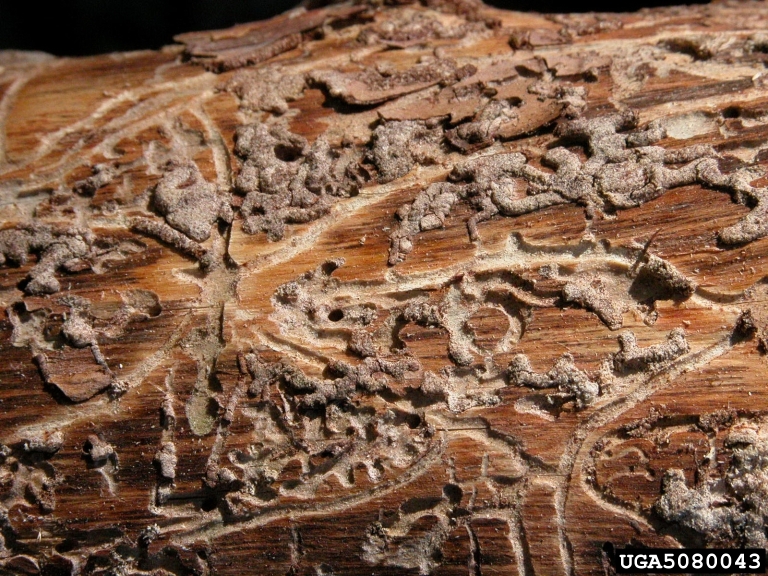Ips Engraver Beetle
Ips is a pine bark beetle that lives predominately in the inner bark, breeding and feeding on the tree's vascular tissues. They usually colonize trees that are already stressed, declining, or fallen.

About Ips Engraver Beetles
Adult Ips beetles are dark red-brown to almost black and 1/8 inch to 1/5 inch (3 to 5 mm) long. They are distinguished from other bark beetles by their scooped-out posterior with 4 to 6 spines on each side. Larvae have white bodies with orange-brown heads and are legless. Pupae are waxy-white and similar to adults in size.
Damage Caused by the Ips Engraver Beetle

The female constructs an egg gallery and lays her eggs beneath the bark of attacked trees. The larvae make individual feeding galleries in the inner bark and pupate at the end of their galleries. New adults emerge after 21 to 40 days during the summer or after several months during the winter.

How to Control the Ips Beetle
The best control is prompt removal and utilization of actively infested trees, making sure that the bark and slabs are destroyed. Insect parasites and predators, woodpeckers, and weather provide natural controls.
Chemical control is seldom warranted under forest conditions, but may be used to protect pines in urban or high-value areas. Preventive control practices include minimizing logging damage to residual stands and quick removal of felled trees.
If you would like more information about Ips engraver beetles, please contact your local MFC forester.
